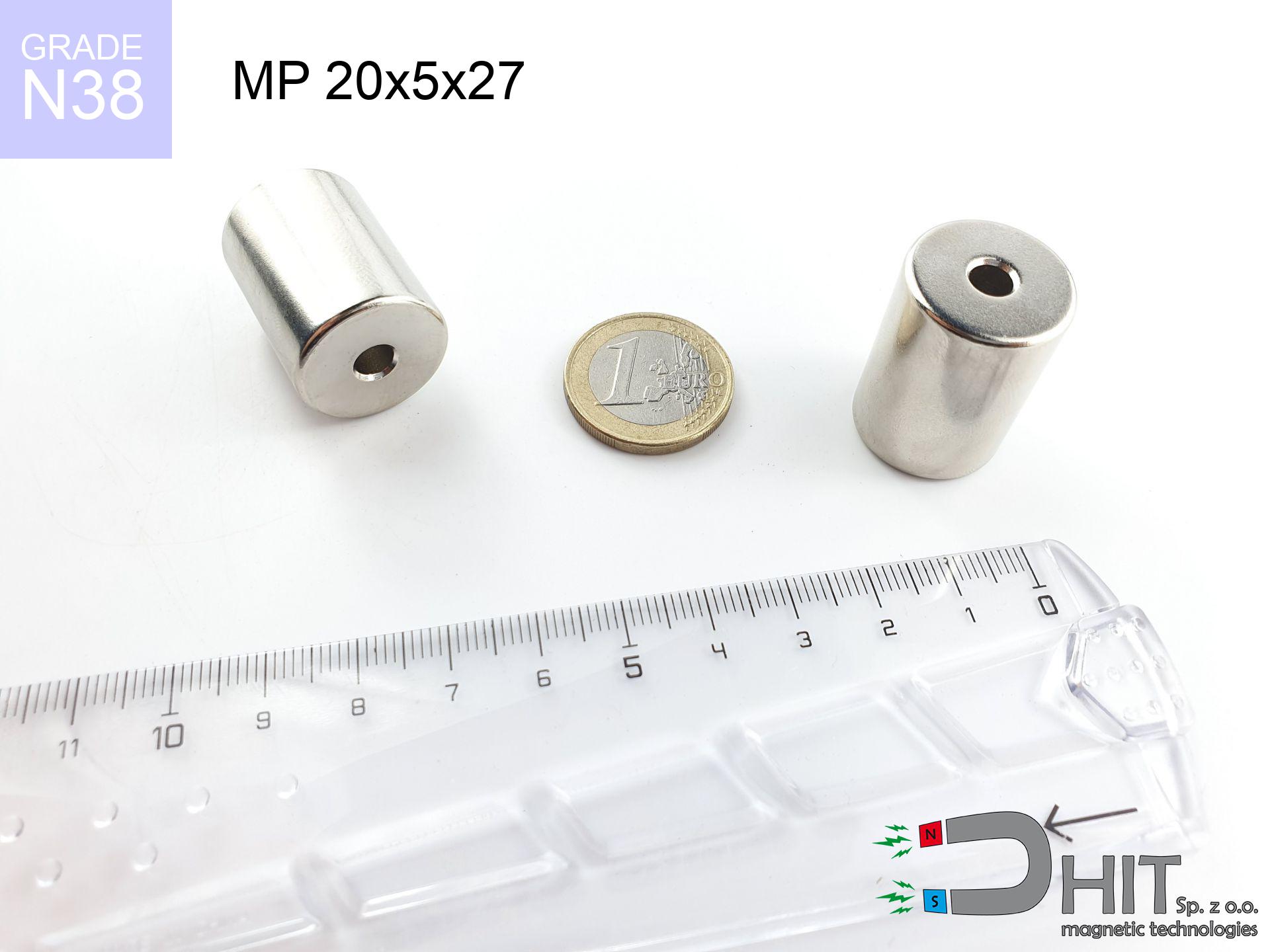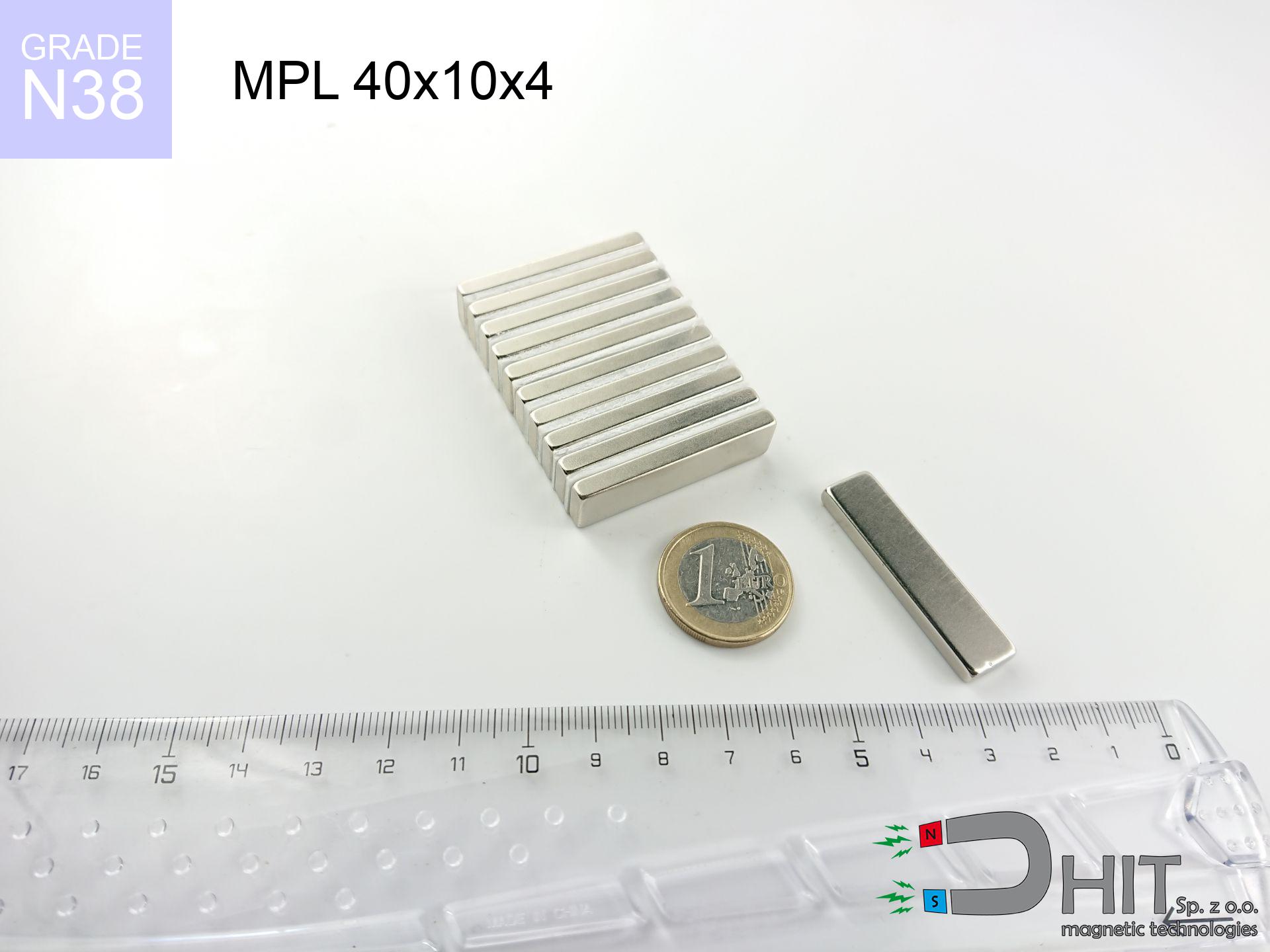UMH 48x11x65 [M6] / N38 - magnetic holder with hook
magnetic holder with hook
Catalog no 310430
GTIN/EAN: 5906301814597
Diameter Ø
48 mm [±1 mm]
Height
65 mm [±1 mm]
Height
11 mm [±1 mm]
Weight
145 g
Magnetization Direction
↑ axial
Load capacity
88.00 kg / 862.99 N
Coating
[NiCuNi] Nickel
68.88 ZŁ with VAT / pcs + price for transport
56.00 ZŁ net + 23% VAT / pcs
bulk discounts:
Need more?
Call us
+48 888 99 98 98
otherwise get in touch through
form
through our site.
Strength as well as shape of a magnet can be analyzed using our
magnetic mass calculator.
Orders placed before 14:00 will be shipped the same business day.
Detailed specification - UMH 48x11x65 [M6] / N38 - magnetic holder with hook
Specification / characteristics - UMH 48x11x65 [M6] / N38 - magnetic holder with hook
| properties | values |
|---|---|
| Cat. no. | 310430 |
| GTIN/EAN | 5906301814597 |
| Production/Distribution | Dhit sp. z o.o. |
| Country of origin | Poland / China / Germany |
| Customs code | 85059029 |
| Diameter Ø | 48 mm [±1 mm] |
| Height | 65 mm [±1 mm] |
| Height | 11 mm [±1 mm] |
| Weight | 145 g |
| Magnetization Direction | ↑ axial |
| Load capacity ~ ? | 88.00 kg / 862.99 N |
| Coating | [NiCuNi] Nickel |
| Manufacturing Tolerance | ±1 mm |
Magnetic properties of material N38
| properties | values | units |
|---|---|---|
| remenance Br [min. - max.] ? | 12.2-12.6 | kGs |
| remenance Br [min. - max.] ? | 1220-1260 | mT |
| coercivity bHc ? | 10.8-11.5 | kOe |
| coercivity bHc ? | 860-915 | kA/m |
| actual internal force iHc | ≥ 12 | kOe |
| actual internal force iHc | ≥ 955 | kA/m |
| energy density [min. - max.] ? | 36-38 | BH max MGOe |
| energy density [min. - max.] ? | 287-303 | BH max KJ/m |
| max. temperature ? | ≤ 80 | °C |
Physical properties of sintered neodymium magnets Nd2Fe14B at 20°C
| properties | values | units |
|---|---|---|
| Vickers hardness | ≥550 | Hv |
| Density | ≥7.4 | g/cm3 |
| Curie Temperature TC | 312 - 380 | °C |
| Curie Temperature TF | 593 - 716 | °F |
| Specific resistance | 150 | μΩ⋅cm |
| Bending strength | 250 | MPa |
| Compressive strength | 1000~1100 | MPa |
| Thermal expansion parallel (∥) to orientation (M) | (3-4) x 10-6 | °C-1 |
| Thermal expansion perpendicular (⊥) to orientation (M) | -(1-3) x 10-6 | °C-1 |
| Young's modulus | 1.7 x 104 | kg/mm² |
Elemental analysis
| iron (Fe) | 64% – 68% |
| neodymium (Nd) | 29% – 32% |
| boron (B) | 1.1% – 1.2% |
| dysprosium (Dy) | 0.5% – 2.0% |
| coating (Ni-Cu-Ni) | < 0.05% |
Sustainability
| recyclability (EoL) | 100% |
| recycled raw materials | ~10% (pre-cons) |
| carbon footprint | low / zredukowany |
| waste code (EWC) | 16 02 16 |
Other deals
Strengths and weaknesses of rare earth magnets.
Strengths
- Their power remains stable, and after approximately 10 years it drops only by ~1% (according to research),
- They have excellent resistance to magnetic field loss due to opposing magnetic fields,
- By using a reflective layer of gold, the element gains an modern look,
- They feature high magnetic induction at the operating surface, which affects their effectiveness,
- Thanks to resistance to high temperature, they can operate (depending on the shape) even at temperatures up to 230°C and higher...
- Thanks to modularity in designing and the ability to customize to specific needs,
- Huge importance in electronics industry – they are utilized in computer drives, electric motors, diagnostic systems, and complex engineering applications.
- Relatively small size with high pulling force – neodymium magnets offer high power in tiny dimensions, which makes them useful in compact constructions
Limitations
- Brittleness is one of their disadvantages. Upon intense impact they can break. We recommend keeping them in a strong case, which not only protects them against impacts but also raises their durability
- We warn that neodymium magnets can reduce their power at high temperatures. To prevent this, we suggest our specialized [AH] magnets, which work effectively even at 230°C.
- Due to the susceptibility of magnets to corrosion in a humid environment, we suggest using waterproof magnets made of rubber, plastic or other material stable to moisture, in case of application outdoors
- Limited possibility of creating nuts in the magnet and complicated shapes - recommended is casing - magnet mounting.
- Potential hazard to health – tiny shards of magnets pose a threat, if swallowed, which becomes key in the aspect of protecting the youngest. Furthermore, small components of these products are able to complicate diagnosis medical after entering the body.
- High unit price – neodymium magnets are more expensive than other types of magnets (e.g. ferrite), which can limit application in large quantities
Holding force characteristics
Maximum lifting force for a neodymium magnet – what affects it?
- using a sheet made of low-carbon steel, functioning as a circuit closing element
- possessing a massiveness of at least 10 mm to avoid saturation
- with a plane free of scratches
- under conditions of gap-free contact (metal-to-metal)
- during detachment in a direction vertical to the mounting surface
- in stable room temperature
Lifting capacity in practice – influencing factors
- Distance – existence of any layer (paint, dirt, air) interrupts the magnetic circuit, which reduces capacity rapidly (even by 50% at 0.5 mm).
- Loading method – declared lifting capacity refers to detachment vertically. When applying parallel force, the magnet holds significantly lower power (often approx. 20-30% of maximum force).
- Wall thickness – the thinner the sheet, the weaker the hold. Part of the magnetic field penetrates through instead of converting into lifting capacity.
- Plate material – low-carbon steel gives the best results. Alloy steels reduce magnetic permeability and holding force.
- Surface condition – ground elements ensure maximum contact, which improves field saturation. Uneven metal reduce efficiency.
- Temperature – heating the magnet causes a temporary drop of induction. Check the maximum operating temperature for a given model.
Lifting capacity testing was conducted on plates with a smooth surface of suitable thickness, under perpendicular forces, in contrast under attempts to slide the magnet the holding force is lower. In addition, even a small distance between the magnet and the plate decreases the lifting capacity.
H&S for magnets
Metal Allergy
A percentage of the population have a hypersensitivity to nickel, which is the typical protective layer for neodymium magnets. Extended handling may cause an allergic reaction. It is best to wear protective gloves.
Respect the power
Handle magnets consciously. Their huge power can shock even experienced users. Stay alert and do not underestimate their power.
Maximum temperature
Standard neodymium magnets (N-type) undergo demagnetization when the temperature goes above 80°C. The loss of strength is permanent.
Hand protection
Big blocks can break fingers in a fraction of a second. Do not place your hand between two strong magnets.
Machining danger
Mechanical processing of NdFeB material poses a fire hazard. Magnetic powder reacts violently with oxygen and is difficult to extinguish.
Material brittleness
NdFeB magnets are ceramic materials, meaning they are prone to chipping. Clashing of two magnets leads to them shattering into small pieces.
Magnetic media
Do not bring magnets close to a purse, computer, or TV. The magnetism can permanently damage these devices and erase data from cards.
This is not a toy
Only for adults. Small elements can be swallowed, leading to serious injuries. Keep out of reach of children and animals.
Life threat
Individuals with a pacemaker must maintain an large gap from magnets. The magnetism can disrupt the functioning of the life-saving device.
Threat to navigation
A strong magnetic field interferes with the operation of magnetometers in phones and GPS navigation. Maintain magnets near a device to avoid breaking the sensors.

![Magnet with hook UMH 48x11x65 [M6] / N38 Magnet with hook UMH 48x11x65 [M6] / N38](https://cdn3.dhit.pl/graphics/banners/magnet.webp)
![UMH 48x11x65 [M6] / N38 - magnetic holder with hook](https://cdn3.dhit.pl/graphics/products/umh-48x11x65-m6-wiw.jpg)
![UMH 48x11x65 [M6] / N38 - magnetic holder with hook - ujęcie 2](https://cdn3.dhit.pl/graphics/products/umh-48x11x65-m6-soh.jpg)
![SM 32x300 [2xM8] / N52 - magnetic separator SM 32x300 [2xM8] / N52 - magnetic separator](https://cdn3.dhit.pl/graphics/products/sm-32x300-2xm8-luf.jpg)




